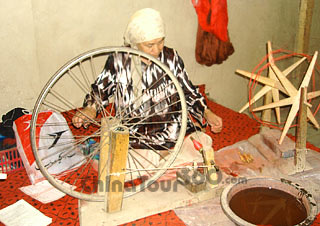 Idili Silk
Idili Silk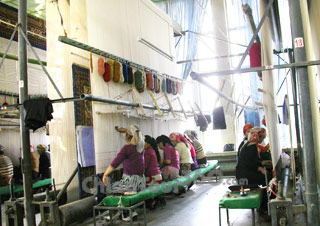 Carpet Weaving Factory, Hetian
Carpet Weaving Factory, Hetian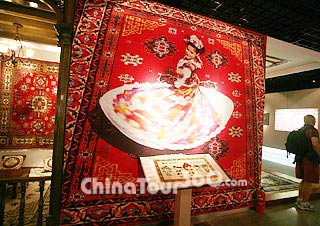 Heitian Carpet Museum
Heitian Carpet Museum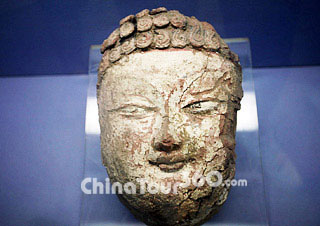 Damgo Buddhism Museum
Damgo Buddhism Museum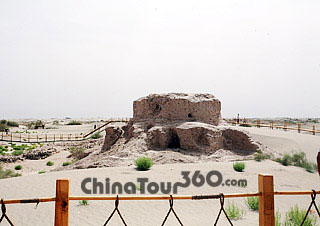 Rawak Temple Ruin
Rawak Temple Ruin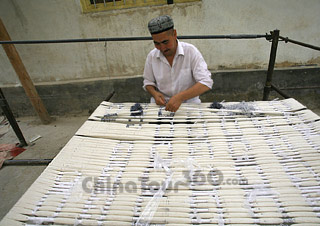 Silk Village, Hetian
Silk Village, Hetian
Hetian Prefecture is located in the southwestern part of the Xinjiang Uygur Autonomous Region. It is sometimes unofficially spelled as Khotan. The prefecture is divided into one county-level city and seven counties with a population of 1,743,000 people (2003), of which the Uygurs makes up over 97 per cent. Covering a total area of 248,000 square kilometers (95,753 square miles), Hotan connects with Tibet via the Karakorum and Kunlun mountains in the south and borders India and the Kashmir region in the southeast and goes deep into the heartland of the Taklimakan Desert. The oasis town of Hetian is the capital of the Hetian prefecture.
![]() History
History
Hetian was called 'Yutian' in ancient times, which means 'place of jades' in Tibetan language. Hetian jade has a history of more than 2,000 years, originating in the Spring and Autumn Period (770 - 476 BC). At the beginning of Qing Dynasty (1644 - 1911), the city changed its name from 'yutian' to 'hetian'. In 1959, it got its present name. Hetian was once a vibrant trading center on the ancient Silk Road, which was the only route linking China and the western world in ancient times.
![]() Topography
Topography
The topography tilts from south to north with an elevation of 1,372 meters (4,501 feet). Hetian has always depended on two strong rivers - the Karakash River and the Yurungkax River, which later unite to form the Hetian River that flows northward for 640 kilometers (400 miles) and eventually joins the Tarim River.
![]() Climate
Climate
The region has a temperate continental arid climate with great difference in temperature between day and night. While Hetian enjoys between 2,500 to 3,500 hours of sunshine each year, the amount of annual precipitation for the entire prefecture averages a mere 150 millimeters (5.9 inches), thus the air is quite dry.
![]() Transportation
Transportation
There is no railway line passing through Hotan. You can reach Hotan easily with daily flights from Urumqi, the capital of Xinjiang. Or travel on quality new sealed asphalt highways from Kashgar, Aksu, Korla and Urumqi.
![]() Tourist Resources
Tourist Resources
Hetian is a pearl on the Silk Road famous for its unique ruins of ancient city and specialties as Hetian jade, silk, carpet. It boasts of wonderful view of the world's second largest desert, the site of the Silk Road with a history of two thousand years, the towering snow mountains, the magnificent glacier and other humanic views. Hetian was strongly influenced by Islamic culture. You can find Islamic architecture and features on almost every street corner. The local people are very hospitable. When important guests arrive, they hold a welcoming party in the courtyard on the red carpeted stage under the grape trellis. Everybody is welcome to join in the singing and dancing.
![]() What to see: Taklimakan Desert
What to see: Taklimakan Desert
![]() Recommended Hetian Tour Itineraries:
Recommended Hetian Tour Itineraries:
Silk Road Adventure Tour: 22-Day of Beijing - Urumqi - Korla - Kuqa - Aksu - Kashgar - Hetian - Minfeng - Korla - Turpan - Dunhuang - Xian - Shanghai







